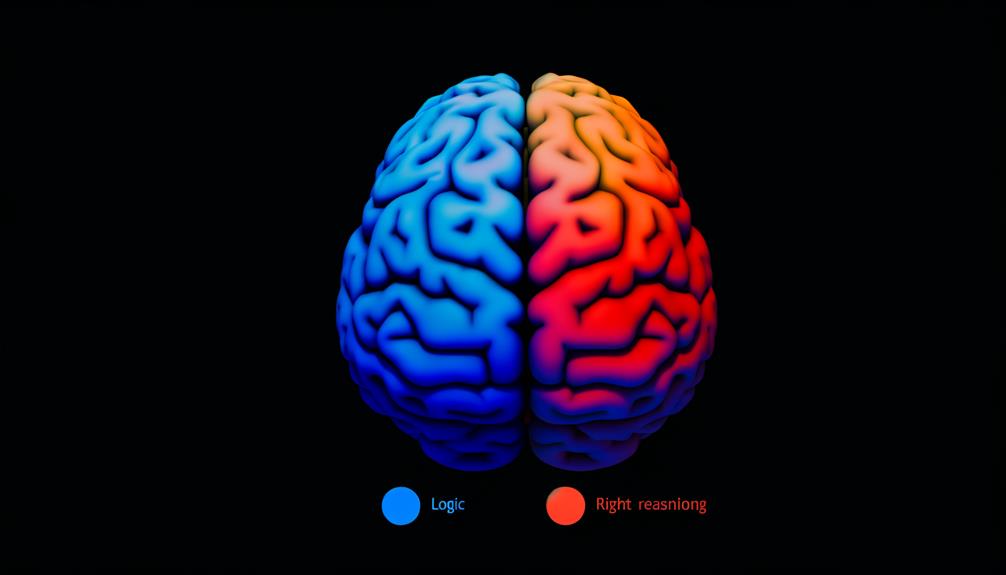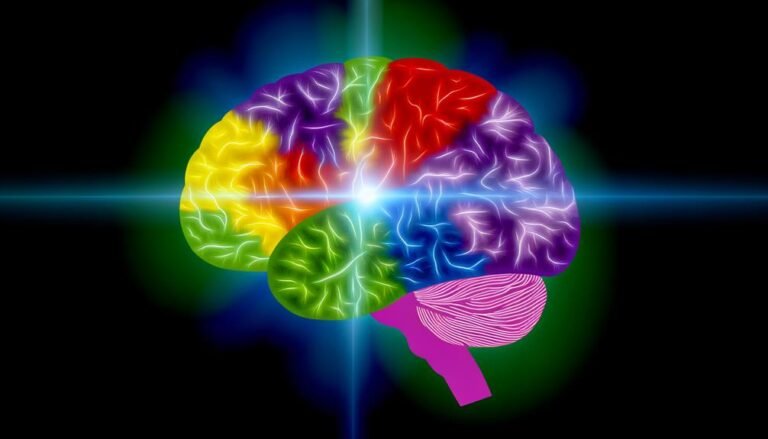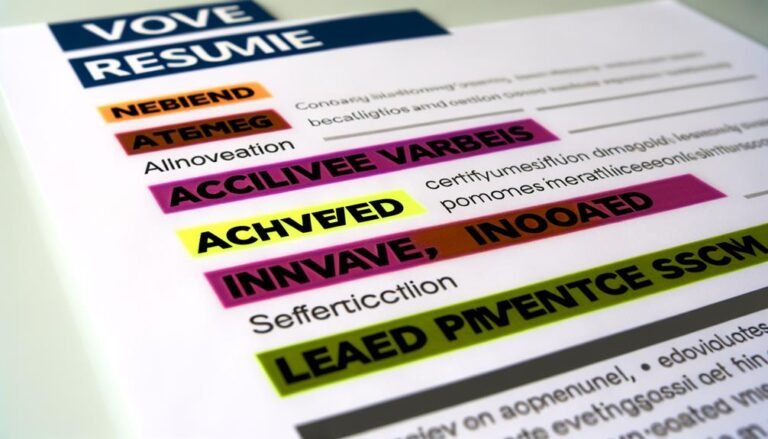Brain Balance: Rethinking Left Vs. Right Dominance
In the exploration of cognitive sciences, the conventional belief in left versus right hemisphere dominance has long been a cornerstone of understanding brain functions.
However, as advancements in research shed light on the complexities of neural connectivity and collaboration between both hemispheres, a new perspective emerges.
The evolving discourse surrounding brain balance challenges entrenched views, prompting a reassessment of how we perceive cognitive capabilities and individual potential.
As we navigate this landscape of integrated brain dynamics, the implications extend far beyond mere hemispheric distinctions, offering a glimpse into a more intricate and nuanced understanding of human cognition.
Key Takeaways
- Both brain hemispheres collaborate for optimal function and problem-solving.
- Brain dominance varies among individuals, challenging the left vs. right concept.
- Understanding brain integration enhances learning, work performance, and well-being.
- Tailoring activities to brain dominance can boost productivity and holistic development.
Brain Hemisphere Functions
The brain hemispheres, each with distinct functions and specialized roles, play a crucial part in cognitive processing and overall brain functionality. The corpus callosum coordination is essential for facilitating communication between the two hemispheres, enabling effective brain hemisphere collaboration.
Research shows that mathematically gifted individuals often exhibit a high level of collaboration between their brain hemispheres, leading to significant differences in brain structure. While some myths suggest people are either left-brained or right-brained, the reality is that both hemispheres are active in most tasks.
Understanding brain dominance can enhance learning and problem-solving approaches. Therefore, recognizing the importance of brain hemisphere functions and promoting collaboration between the two sides can lead to improved cognitive abilities and overall brain performance.
Corpus Callosum Communication
Facilitating interhemispheric communication, the corpus callosum serves as a vital neural bridge enabling effective collaboration between the brain's two hemispheres. This structure plays a crucial role in brain communication and neural connectivity by allowing information to be shared and processed between the left and right hemispheres.
Research indicates that a well-functioning corpus callosum is essential for integrated brain function and cognitive abilities. Studies have shown that individuals with a more developed corpus callosum tend to exhibit better problem-solving skills and enhanced overall brain connectivity.
Understanding the importance of this neural pathway can provide insights into how the brain processes information and the significance of balanced communication between its hemispheres for optimal cognitive performance.
Left & Right Brain Industry Impact
Industry practices and educational frameworks have long been influenced by the prevailing notion of distinct left and right brain functions. This influence has shaped how companies approach cognitive diversity and innovation strategies.
- Companies have tailored training programs to enhance cognitive diversity within teams, recognizing the value of different thinking styles.
- Innovation strategies have evolved to incorporate both logical analysis and creative intuition, leveraging the strengths of each hemisphere.
- Workplace structures are being reevaluated to promote collaboration between individuals with diverse brain preferences, fostering a balanced approach to problem-solving and decision-making.
Research on Brain Dominance
In the realm of cognitive research, investigations into brain dominance have shed new light on the intricate interplay between hemispheric functions and their implications for human cognition and behavior.
Mathematical analysis of brain activity has revealed that mathematically gifted individuals, particularly boys, exhibit collaborative functioning between brain hemispheres. Studies on the brains of math-genius boys have shown significant differences, emphasizing the importance of understanding cognitive development in relation to brain dominance.
Contrary to popular belief, a study of 1,011 individuals found no conclusive evidence of a dominant brain hemisphere preference. These findings challenge previous assumptions and highlight the complexity of brain lateralization, underscoring the need for further research into the nuanced relationship between brain hemispheres and cognitive abilities.
Human Capital Implications
The examination of human capital implications in relation to brain dominance reveals the need for a nuanced approach to understanding and leveraging cognitive diversity in organizational settings.
- Training Strategies: Implement tailored training programs that cater to both left and right brain preferences, enhancing overall cognitive development.
- Workplace Dynamics: Foster an environment that values and utilizes the strengths of both hemispheres, promoting collaboration and innovation.
- Employee Development: Offer opportunities for employees to engage in activities that promote brain integration, leading to improved problem-solving skills and increased productivity.
Myths Vs. Realities
Human capital implications stemming from the examination of brain dominance highlight the importance of dispelling common myths and understanding the true realities of how our brains function in various tasks and activities.
Common misconceptions, such as the belief that people are strictly left-brained or right-brained, have been widely circulated. However, scientific evidence suggests that both hemispheres are active in most tasks, debunking this myth.
Another myth is that left-brained individuals are inherently more organized, while right-brained individuals are more artistic. In reality, brain dominance varies among individuals, and both hemispheres contribute to different aspects of cognition.
Understanding these realities is crucial for accurately interpreting brain functioning and its impact on learning and behavior.
Impact on Learning
Understanding the implications of brain dominance on learning outcomes is essential for optimizing educational strategies and cognitive development. When considering brain dominance in education, the following points are crucial for enhancing learning effectiveness and student success:
- Tailoring Teaching Methods: Adapting instructional approaches to align with students' dominant brain hemispheres can improve comprehension and retention.
- Implementing Balanced Activities: Incorporating tasks that engage both hemispheres fosters holistic cognitive development and enhances overall learning outcomes.
- Utilizing Cognitive Development Strategies: Employing specialized techniques that target specific brain functions can aid in strengthening weaker areas and promoting balanced brain activity for improved learning capabilities.
Enhancing Brain Integration
Enhancing brain integration is pivotal in optimizing cognitive function and problem-solving efficacy through synchronized hemispheric collaboration. Research suggests that activities like meditation offer benefits by harmonizing brain hemispheres.
Additionally, integrating cognitive exercises into daily routines can enhance overall brain connectivity, facilitating improved communication between the left and right hemispheres. Cross-body exercises have been shown to promote interhemispheric interaction, while music therapy can stimulate brain integration processes.
Recognizing individual brain dominance can aid in tailoring activities to improve work performance and problem-solving skills. By incorporating these brain integration techniques, individuals can strive towards holistic well-being and improved cognitive outcomes.
Practical Applications for Brain Balance
Integrating brain balance practices into daily routines can significantly enhance cognitive function and problem-solving efficacy by fostering synchronized collaboration between the brain hemispheres. To achieve this, consider the following:
- Mind Body Connection: Engage in activities like yoga or tai chi that promote the connection between mind and body, enhancing overall brain function.
- Cognitive Diversity: Challenge your brain by learning new skills or hobbies outside your comfort zone, encouraging cognitive diversity and stimulating both hemispheres.
- Structured Brain Training: Incorporate structured brain training exercises, such as puzzles or memory games, to target specific cognitive functions and promote balanced brain activity.
Implementing these practices can lead to improved brain integration and overall cognitive performance.
Holistic Well-Being Through Brain Integration
A critical factor in achieving holistic well-being is the synchronization of brain hemispheres through integrated cognitive practices. Mindfulness practices play a crucial role in fostering brain integration, enhancing cognitive development, and promoting overall well-being.
By engaging in mindfulness activities, individuals can improve their focus, attention, and emotional regulation, leading to a more balanced brain function. These practices stimulate both hemispheres, encouraging collaboration and communication between the left and right sides of the brain.
Through consistent engagement in mindfulness techniques, individuals can enhance their cognitive abilities, increase brain connectivity, and experience a sense of holistic well-being. Incorporating mindfulness practices into daily routines can have profound effects on mental health, emotional stability, and overall quality of life.
Conclusion
In the intricate dance of brain function, the left and right hemispheres collaborate like a well-rehearsed ballet, each playing a vital role in cognitive tasks and problem-solving.
As we unravel the complexities of brain integration, we find that balance and harmony between the hemispheres are crucial for optimal performance and well-being.
Just as a symphony requires all instruments to play in sync, so too does the brain require both hemispheres to work together in harmony for peak efficiency and holistic development.





